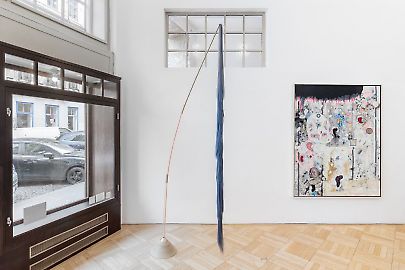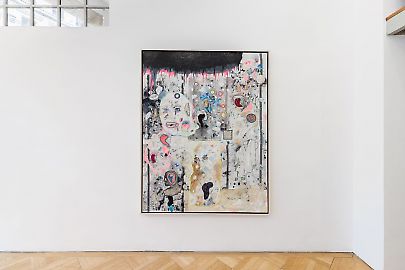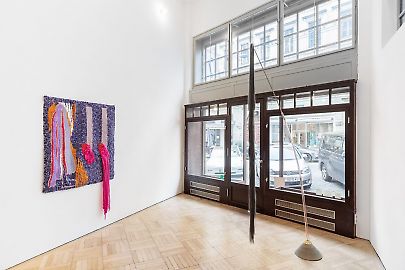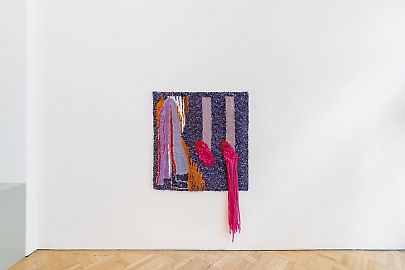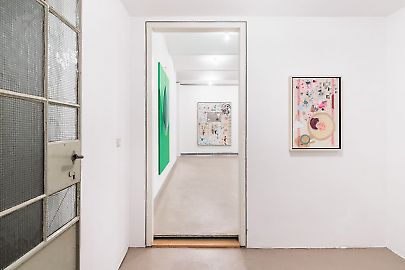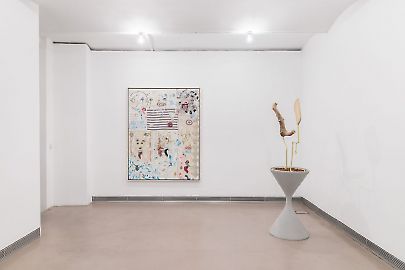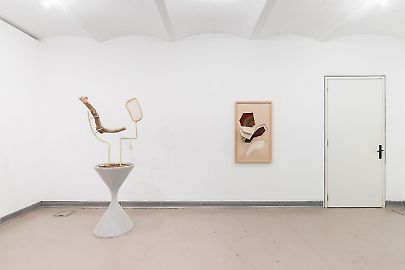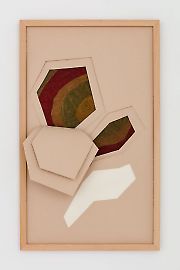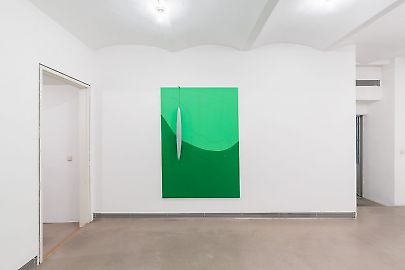Precious --
CARTER, Katrina Daschner, Jakob Lena Knebl, Camila Sposati
Opening: January 19, 18.00 - 21.00
In the 20th century, the replacement of art production away from the image-related concept in art led to a paradigm shift, that emancipated a wide variety of materials and made new aesthetic categories possible. Textiles played an important role in this development. Precious brings together four artistic positions whose various uses of textiles point to the multiple contextualizability of the material.
The paintings by the American artist CARTER form lively patchworks of personal symbolism. Informed by a decades-long interest in the tropes of traditional portraiture painting, he enhances his work with gestures and facial expressions, such as twisted outstretched tongues hanging from neon-colored mouths paired with piercing pairs of eyes. The effect is a visceral sensation that bridges the fine line between pleasure and repulsion. His hallucinatory color palette is expanded with the inclusion of terry cloth, tea towels, doilies, appliqués/patches and other embroidered embellishments. Familiar materials, often assigned to the feminine, reflect his critical interest in suburban life and the social and cultural weight of narrowly defined gender labels.
Inherent to Katrina Daschner's works is the play with sensual perceptions, textures and feelings. In the Lesbian Teletentakel series, the artist uses green screen that makes backgrounds interchangeable in film or television, as carrier material and thus provides the viewer an individual projection surface. The embroidered forms of non-gender binary water creatures and sewn contours flow into each other. The synthetic hair as a sculptural element, transforms the two-dimensional work and creates new bodies far from any norm. With a tactile eye she condenses gender issues in a subtle way, makes them sensually tangible and questions what is defined as artistic and social norm.
In her works, Jakob Lena Knebl combines the associative abundance of her own thinking with various artistic practices. Her interest in alternatives to normative and commercialized desires, as well as the interplay between the object as a body in space and its impact on the beholder's body, leaves her questioning the fetish as a motor in our relationships with bodies, materials and things in general as identity-forming moment. The tapestry, a recurring object in Knebl's environments and scenographies, represents a turning point: while the term Applied Art is still tangible here and follows the pure surface of style history, the implementation is of socio-theoretical relevance and part of cultural and social history.
Camila Sposati investigates transformation and energy processes using means that often resemble scientific research methods. In her works, she juxtaposes material and historical processes in order to examine our perception of nature and its meanings. The group of works Charting Revolution, Transecting the Symbolic Roots of the Earth (2011) was created during a field research trip along the historic Silk Road in the Turkmen desert and in Uzbekistan. With local embroideries, so-called Suzanis, which she commissions as a starting point for her textile works, she weaves the complexity of geological conditions, traditional craftsmanship, ecological issues and social conditions into a visual experience of sovereign conceived objects.


